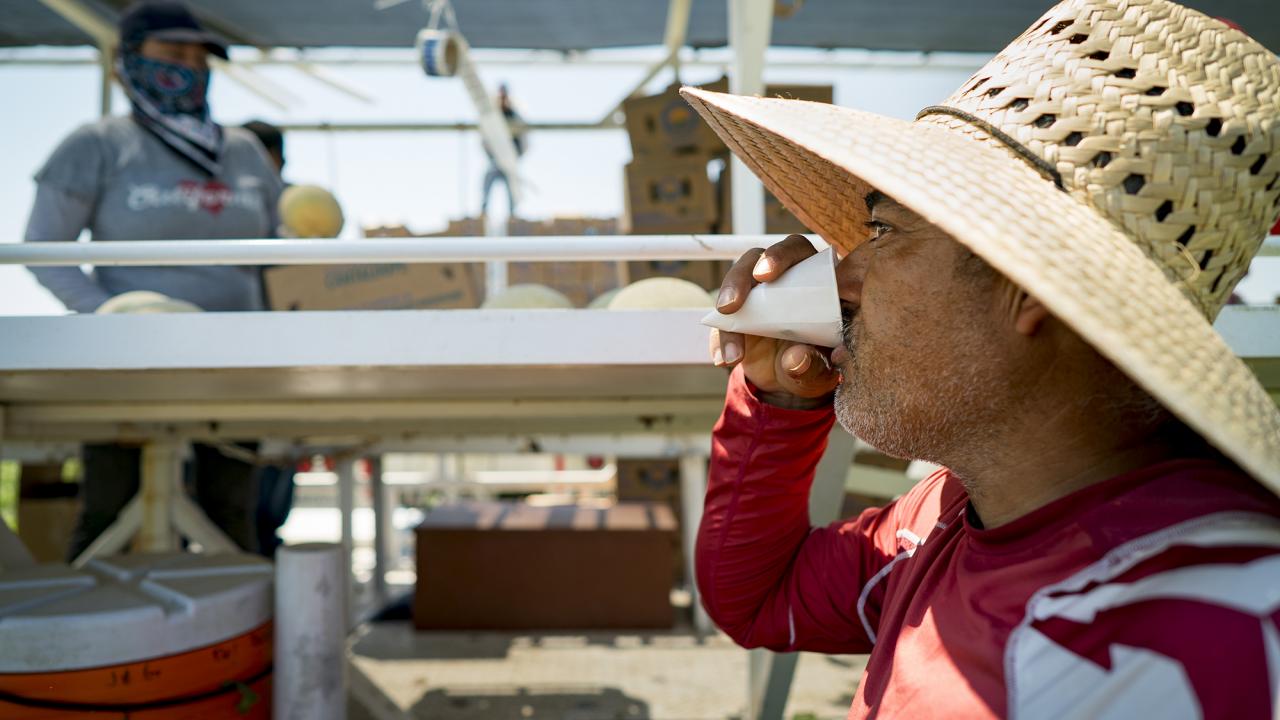
Tidbits from Trainings: What to do if someone gets sick from the heat
Agricultural workers are especially vulnerable to heat illness due to the nature of their work: outdoors, long hours, and at peak harvest times during the hottest months of the year.
Read on for tips taken straight from our Heat Illness Prevention training to help keep you safe and healthy and to potentially save a life!
Prevention
First things first, preventing heat illness before it starts is a much better option than having to respond in an emergency.
If you‘re spending time outdoors in the heat, remember these three words:
WATER, SHADE, and REST
Taking breaks in the shade and drinking plenty of water are the first steps in prevention!
Symptoms of Heat Illness
Heat illness often begins with heat exhaustion and, depending on the individual and their environment, can develop into the more severe heat stroke, which can lead to organ failure, coma, or even death.
Many of the symptoms of heat exhaustion can be perceived as normal responses to spending time in the heat. It is important to familiarize yourself with the symptoms so that you can recognize when you are getting sick.
Symptoms of Heat Exhaustion:
- Fatigue
- Cramps
- Headache
- High pulse
- Nausea or vomiting
- Excessive sweating
Symptoms of Heat Stroke:
- High body temperature
- Dry skin
- Confusion
- Fainting
- Convulsions
What to Do if Someone Gets Heat Illness
If someone gets heat exhaustion, remember WATER, SHADE, and REST. Have them take a break in the shade and drink some water. In a few minutes they may feel fine and able to continue what they were doing, but in some cases people who get heat exhaustion may need medical attention.
When it comes to heat stroke, there is no question that the person needs immediate medical attention.
Regardless of the type of heat illness, here are the steps we suggest you take in an emergency:
- Call 911, or your local emergency services, and notify the supervisor. If there are multiple witnesses, have one person call 911 and notify the supervisor and the other tend to the victim and perform first aid.
- Move the person under the shade. Either help them walk or have someone help you take them to the shade.
- Ask them to loosen their clothes and to remove extra layers of clothing. If they are unable to do this themselves or are unresponsive, respectfully help loosen clothing and remove outer layers such as sweaters, second shirts, and bandannas.
- Help them lower their body temperature.
- Fan them with a piece of cardboard or anything else you can find that works.
- If possible, put a wet cloth on their forehead and underarms. These areas of the body absorb temperature changes faster and will help the person cool down faster overall. NOTE: Do not use ice on the wet cloth, because an abrupt change in temperature can send the person into shock and cause more harm than good.
- If the person is conscious and not vomiting, give them small sips of water, little by little.
- Never leave the person alone. Stay with them until emergency services arrive and be ready to describe the person’s symptoms.
